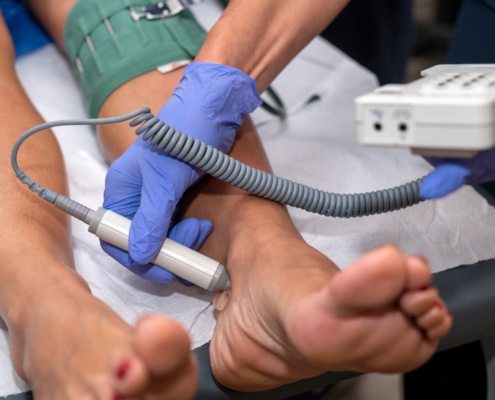Vascular Services
If you experience pain or cramping, during everyday activity, that fades away when you stop moving, you may be experiencing a sign of peripheral vascular disease (also known as PVD or poor circulation). With PVD, the vessels that carry blood to your lower body become narrowed or blocked. Over time, this can lead to gangrene, and in extreme cases, it could lead to amputation. However, you can visit Cardiology Associates of Port Huron, P.C. and meet our experts to discuss your problems.
How Is PVD Diagnosed?
There are two types of PVDs. The first is functional PVD, which do not involve defects in your blood vessels’ structure and often have spasm-like symptoms that come and go. The second type is organic PVD. A common example of this is peripheral artery disease (PAD), which is caused by fat buildup in the inner walls of the arteries.
Diagnosis begins with a medical history and physical exam, during which tests like an ankle-brachial index, duplex ultrasound imaging, and angiograms may be performed.
How Is PAD Treated?
Most people with PAD can be treated with lifestyle changes, medicines, or both. In some patients, these measures alone may not be enough, and angioplasty or bypass surgery may be required.
Angioplasty is a non-surgical procedure that widens narrowed or blocked arteries. A catheter with a deflated balloon on its tip is passed into the narrow artery; then the balloon is inflated to push it open. After that, the balloon is deflated and a stent is usually placed in the narrowed artery to keep it open. If a large part of your artery is narrowed, a bypass may be necessary. Using a different vein, this provides a detour for the blood around the blockage.

